Your car’s serpentine belt and timing belt play crucial roles in keeping the engine running smoothly. Neglecting their maintenance can lead to serious mechanical failures and costly repairs. Maintenance starts with an understanding of how things work—so let’s dive in!
Understanding the Serpentine Belt and Timing Belt
Serpentine Belt
The serpentine belt is a long, continuous belt (think snake – hence the serpentine name) that drives multiple engine components, including the alternator, power steering pump, air conditioning compressor, and sometimes the water pump. It transfers rotational power to the car’s various components to keep you moving.
Timing Belt
The timing belt synchronizes the rotation of the crankshaft and camshaft, ensuring that the engine’s valves open and close at the correct intervals. A failed timing belt can lead to catastrophic engine damage, including bent valves and damaged pistons.
With such vital roles, it’s important to know the early signs of failure — so you can address it before it becomes an issue.
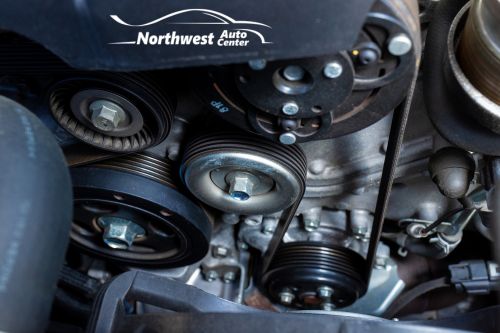
Symptoms of a Failing Serpentine Belt
Squealing or Chirping Noises: A high-pitched squealing sound when starting the engine or while driving could indicate a loose or worn-out belt or a faulty belt tensioner.
Cracks or Fraying: Visible cracks, frayed edges, or glazing (a shiny appearance) on the belt surface suggest it needs replacement.
Accessory Malfunctions: If your alternator, power steering, or air conditioning stops working correctly, the serpentine belt may be slipping or broken.
Symptoms of a Failing Timing Belt
Rough Idling or Misfires: A worn timing belt may cause the engine to misfire or run roughly due to improper valve timing.
Engine Won’t Start: A broken timing belt means the engine won’t run, as the crankshaft and camshaft are no longer synchronized.
How to Maintain Your Car’s Serpentine and Timing Belts
Perform Regular Inspections
Check the serpentine belt for cracks, fraying, or wear every 10,000 to 15,000 miles.
** Note ** A shop that services your vehicle should be keeping you apprised of the above.
Inspect the timing belt during major service intervals, usually between 60,000 and 100,000 miles, depending on your vehicle manufacturer’s recommendations.
** Note ** Timing belts have recommended service intervals by the manufacturer; usually by mileage
Keep the Belts Properly Tensioned
A loose serpentine belt can slip and cause accessory failures, while an overly tight belt can strain components. Many modern vehicles use automatic tensioners, but it never hurts to double-check to verify that everything is working correctly.
Replace the Belts at Recommended Intervals
Replace the serpentine belt every 50,000 to 100,000 miles or as your owner’s manual suggests.
The timing belt should be replaced according to the manufacturer’s service schedule, typically between 60,000 and 100,000 miles.
Check for Belt Alignment Issues
Misaligned pulleys can cause premature belt wear. If you notice uneven wear, have a professional inspect the pulley alignment. If replacing the serpentine belt, check the tensioner and idler pulleys for smooth operation.
Avoid Contaminating the Belts
Engine oil, coolant, or other fluids can deteriorate the rubber and shorten the life of both belts. If you notice leaks near the belts, address them immediately to prevent contamination.
Replace Associated Components
When replacing the timing belt, replacing the water pump, tensioners, and pulleys is often recommended, as these components wear at a similar rate. If your serpentine belt is worn, inspect the tensioner and idler pulleys to ensure they function correctly.
DIY vs. Professional Vehicle Maintenance
Checking for visible wear on the serpentine belt is a simple task most car owners can do.
For some savvy car owners, replacing the serpentine belt can be an at-home project. Just make sure you fully understand what you’re doing at all steps.
On the other hand, timing belt replacement is complex and often requires specialized tools and mechanical expertise. Due to the precision required, a certified mechanic should handle it.
At Northwest Auto Center of Houston, we can help your vehicle’s belts run smoothly. Call us today at (281) 894-8880 to make an appointment.
Keeping Your Vehicle Belts Running Smoothly
Regular serpentine and timing belt maintenance is essential to keeping your vehicle running smoothly. By conducting routine inspections, replacing the belts at recommended intervals, and addressing issues early, you can prevent costly breakdowns and ensure a long lifespan for your engine.
If in doubt, seek professional assistance to avoid engine damage. Following these crucial maintenance steps will help you enjoy a reliable and efficient driving experience.

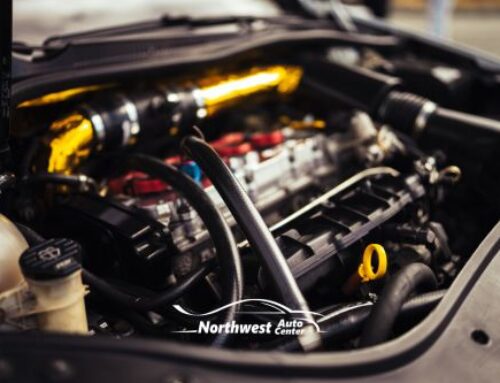
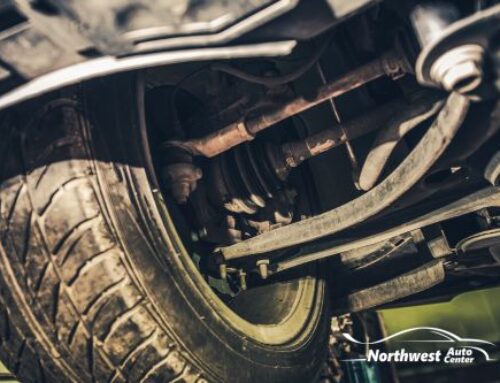

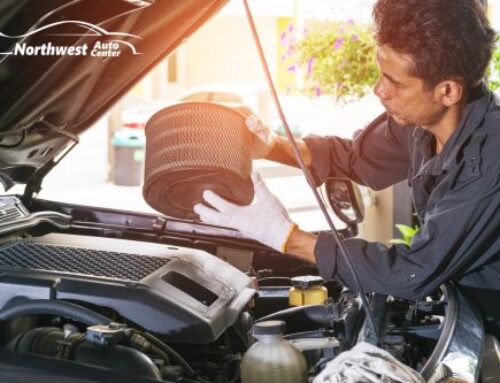
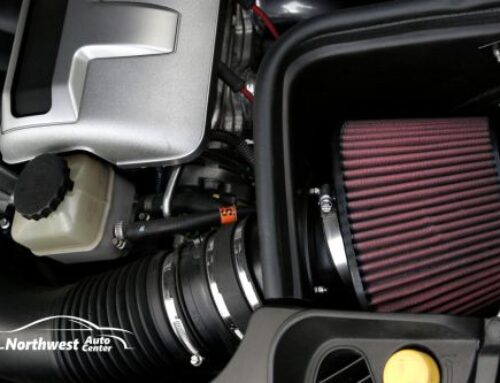
Leave A Comment
You must be logged in to post a comment.